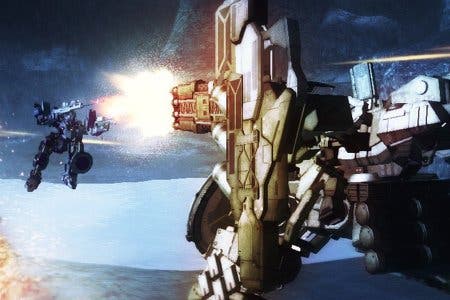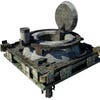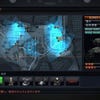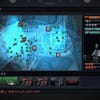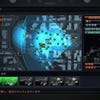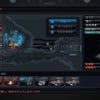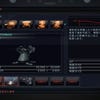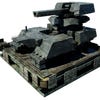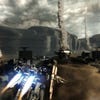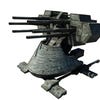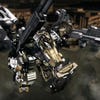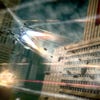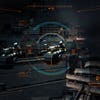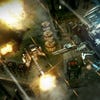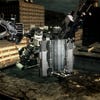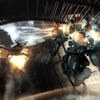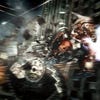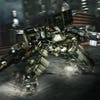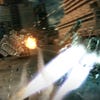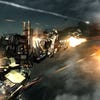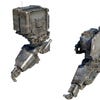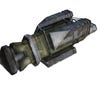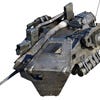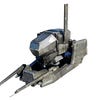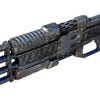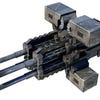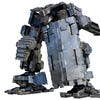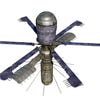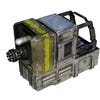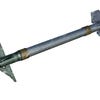Armored Core 5 Review
Full metal racket.
When the PS3 version of Armored Core 5 surfaced in Japan earlier this year, it instantly beat Resident Evil: Revelations to the top of the charts - and even gave the 360 a rare top 10 showing at number six. But despite coming from the same studio that brought us the spectacular Dark Souls, the arrival of a new Armored Core game on our shores will, for the most part, be met with the same enthusiasm as a five pound book token.
However, for those who played the original Armored Core demo and subsequently bought all seven PlayStation 2 games after getting hooked on the thrill of mecha engineering, the release of the 14th instalment raises a couple of questions. One: is it still possible to steamroller through the single-player missions with a tank-spec AC festooned with Gatling guns and grenade launchers? Two: has From Software finally ditched the update mentality by releasing a sequel that shows substantial progression? That's an unequivocal yes on the first count, and a more tentative nod on the second.
Although story has always taken a back seat, Armored Core 5 sticks to the dystopian future setting where mankind has rendered much of the world uninhabitable. Instead of depicting competing companies who hire your piloting skills to outdo each other in underhanded corporate warfare, the game casts you as a member of a Resistance group that's trying to take down the tyrannical "Corporation" and its oppressive army of sinister machines. It's a mechanical story, devoid of human emotion.
Not that anyone will care, though, as the 10 Story Missions are fast-paced and offer a steady challenge. They're also considerably longer than the Armored Core norm, with checkpoints that give you a second chance should you fail to dodge one missile too many as well as an aerial support Garage that you can call in mid-mission should you need to resupply. But Armored Core 5's real twist is its online focus.
When playing Armored Core 5 for the first time, you're asked to join an existing team or create your own, and seeing as the European and Japanese servers are separate - likely to avoid us getting a severe paddling at the hands of a nation raised on Gundam and Evangelion - I decide to be the founding member of the nonsensical Stealth Toads. This was a quick and painless process with options for creating your own emblem and team colour scheme and choosing an Enlistment Method that's Free, Closed, Screening based or Password protected.
Once registered, you can trade AC parts with other team members and tackle Story Missions in teams of two - with the extra help coming at the cost of half your pay packet. Then, once you've dealt with all manner of long-range sniper mechs and armoured trains with multiple turrets and missile pods, you can get stuck into the far more numerous (83 to be precise) Order Missions. These are more akin to the classic Armored Core operations from the past and have you sweeping through modestly-sized maps from top to bottom in around five minutes of trigger-happy carnage.
The way you build and pilot your humanoid tank has also been changed to make individual design choices more meaningful while placing a stronger emphasis on the surrounding environment. For starters, you can no longer hold the boost button to make like a rocket man till you run out of energy, as you're limited by the jumping capabilities of your legs - and while you can still glide across a river, you'll have to use a new vertical leapfrogging technique called Boost Drive if you want to reach the top of a conveniently placed skyscraper.
This gives Reverse Jointed ACs a more distinct advantage over Tank legs, as while caterpillar tracks offer unparalleled pivoting when stationary - and are still the only way to fire heavy weapons on the move - those with bendy knees can pogo between buildings while raining down fire. The new Scan Mode also opens up a wealth of stealth options by letting you launch a limited supply of Recon drones that can detect enemies through buildings, and although head-to-head combat is still the primary focus once two ACs collide, switching to Scan Mode can be useful, as your energy recharges twice as fast.
Aside from a universal Boost attack that lets you bash into opponents for critical melee damage, you have to enter Attack Mode to fire your ranged weapons. It's here that Armored Core 5 shakes things up further; while past games have featured solid and energy-based munitions, the armoury is now split three ways between Kinetic, Chemical and Thermal weapons. This means you can design an AC that's particularly resistant to one weapon type or moderately defensive against all three - but, crucially, it's always going to be susceptible to something.
Your preferred legs, meanwhile, are more important than ever as they dictate your overall armour and resistance ratings. By removing the advanced tuning systems and unnecessary balance stabilisers from Armored Core 4 and then replacing them with a more accessible specialisation system that lets you upgrade your Pulse Machine Guns and Sniper Cannons simply by using them, Armored Core 5 retains its hardcore edge while lowering the barrier to entry for beginners. It's still got a lot of statistical depth, but each number now feels more weighted and less arbitrary.
The presentation also harks back to earlier games, with a gritty and often alien aesthetic, and although the frame-rate can sometimes drop dramatically when you're being swarmed on all sides, this still ranks as the most visually accomplished Armored Core to date (even if the sci-fi setting doesn't compare to the fantasy charms of From's last hit). But if there's one defining area where Armored Core 5 stands out from its predecessors, it's the online turf wars.
Simpler in principle than the persistent battlefields of Steel Battalion: Line of Contact, Conquest Missions offer teams the chance to try to capture valuable Territories that will raise their Team Level and unlock better AC parts. These take the form of five-on-five battles where the defenders have to guard a tactical objective while the attackers have just 10 minutes to capture or destroy them, and by letting teams devise strategies that combine the inherent strengths and weaknesses of different AC designs, the game becomes as much about effective team synergy as it does individual piloting skill.
This is a sentiment that sums up Armored Core 5 rather well, as while the series has always championed the lone mercenary routine with a multiplayer sideline, the focus has shifted from solo sorties to co-operative campaigns. It's still the hardcore spectacle we know and love, with its Moonlight laser blades and hidden AC parts, but by bringing mecha enthusiasts together in a team-based environment that isn't restricted to one-on-one arena battles, we finally have a game on which an online community can be built. Because if there's one thing that Armored Core excels at, it's supplying the tools to create something special.
